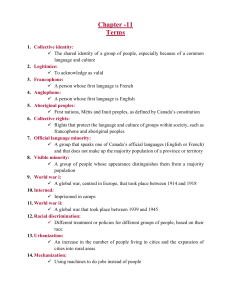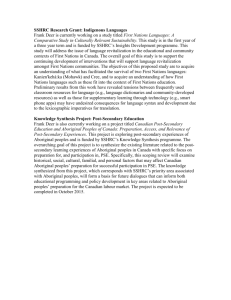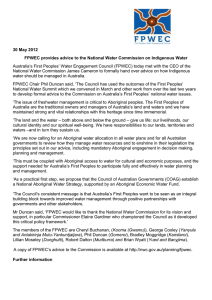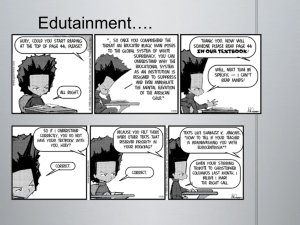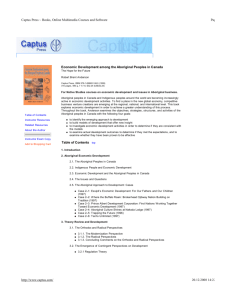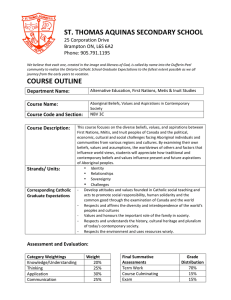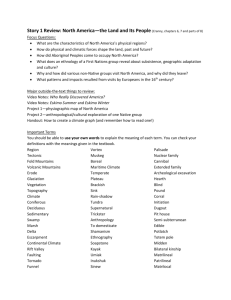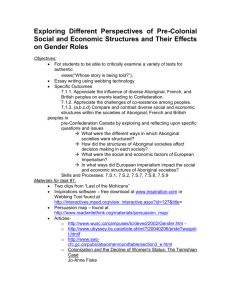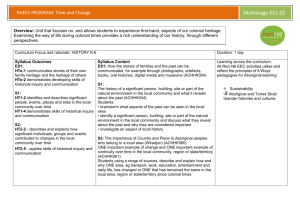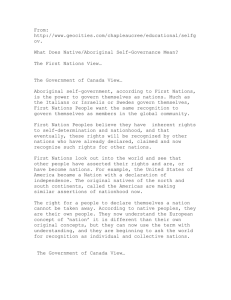Aboriginal `Simple` Machines
advertisement
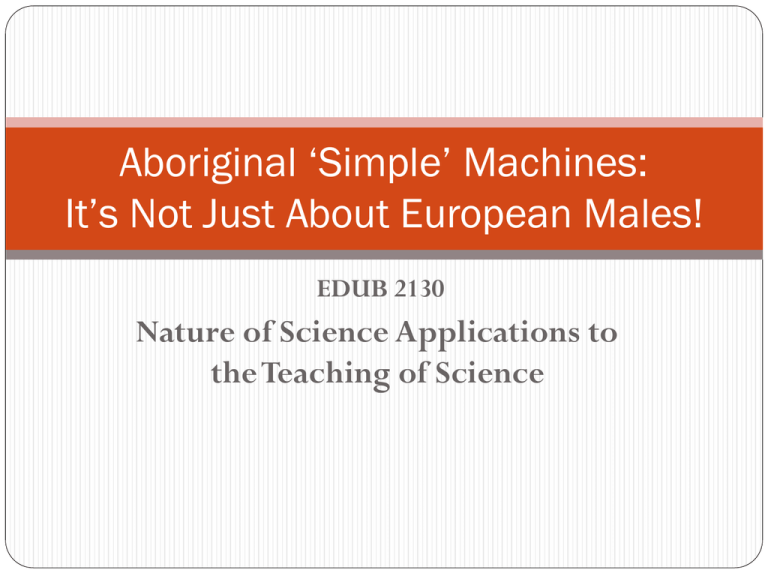
Aboriginal ‘Simple’ Machines: It’s Not Just About European Males! EDUB 2130 Nature of Science Applications to the Teaching of Science ‘Simple’ Machines Simplest mechanisms that provide some advantage in moving an object. Pulleys, screws, wheels & axles, inclined planes (ramp), lever and wedge Reduced labour – most of us aren’t into ‘no pain, no gain’ HN #1: If there’s an easier way, I’ll use it! HN #2: Faced with a problem, we seek solutions! Historically the attention to Simple Machines has been given to Archimedes & Greek society in 3BC ( 5000 years ago). Any consideration that we don’t need to look far to see SM, even earlier, even among our First Peoples? Salmon Wheels Archaeologically dated to 3000 years. Modified significantly since then Effective use of a wheel and axle system as well as an inclined plane (lots of YouTube examples) Were not given a ‘science name’ – Gwichin - fish large hands. Creative solutions to problems faced – world wide examples of simple machines among Aboriginal peoples Science – technology link – without these creative solutions our scientific understanding both simple machines would be limited – Science and technology development is intertwined What Did I Learn About the Nature of Science? Example Science is not just about white male people – European males! Other peoples have contributed. Science development occurs because of technological development. Science development is a creative process associated with problem solving – challenge of situation Science developments have had – and + consequences Application to the Teaching of Science? Example to My Teaching? We need to realize that Aboriginal cultures are thoughtful and purposeful and draw upon this in our teaching From the examples of technology we see through history we can identify scientific principles at work Use technology to assist in science learning Microscopes, rulers, smart boards, etc can assist me in my teaching .
